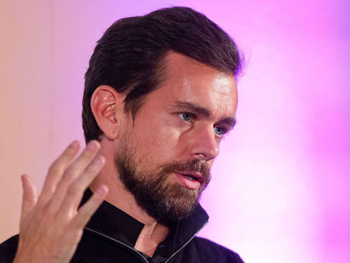San Francisco, Feb 3: Twitter CEO Jack Dorsey and about 1,000 of his colleagues have donated over USD 1.5 million to a leading rights group that has pledged to fight President Donald Trump's temporary ban on refugees and immigrants from seven Muslim-majority countries.
 The donation has been made to American Civil Liberties Union (ACLU) that has reportedly raised more than USD 24 million in online donations in the past few days.
The donation has been made to American Civil Liberties Union (ACLU) that has reportedly raised more than USD 24 million in online donations in the past few days.
Initially, 925 Twitter staff pulled together a donation of over USD 530,000. That was then matched by CEO Dorsey and Executive Chairman Omid Kordestani to take the total to USD 1.59 million, TechCrunch reported, citing a company-wide email.
A Twitter spokesperson confirmed the donation and the numbers involved to the tech industry news website. "Our work is far from done. In the coming months we'll see a flurry of legal challenges, legislative pushes and public pronouncements. But as long as civil liberties are threatened, I'm proud to know that as individuals we will stand up to defend freedom and look after people," Twitter General Counsel Vijaya Gadde wrote in the memo.
"The Executive Order's humanitarian and economic impact is real and upsetting," Dorsey said on Twitter over the weekend. "We benefit from what refugees and immigrants bring to the US," he said.
Also, Microsoft has requested the Trump administration to ease travel restrictions on its employees affected by the executive order on immigration, visa and border security.
Trump last week signed the sweeping executive order to suspend the arrival of refugees and impose tough new controls on travellers from Iraq, Syria, Iran, Libya, Somalia, Sudan and Yemen as part of new measures to "keep radical Islamic terrorists" out of America.
Silicon Valley's top executives, including India-born CEOs Google's Sundar Pichai and Microsoft's Satya Nadella, had condemned Trump's immigration ban, voicing concern that the move could directly hit their own staffers and stop bringing great talent to the US.
Executives from Microsoft, Google, Apple, Netflix, Tesla, Facebook, Uber and other top American companies slammed Trump's immigration order that sparked widespread protests across the US.
Tech giant Google also created a crisis fund that could raise up to USD 4 million for four immigrant rights organisations, including ACLU and UN High Commissioner for Refugees (UNHCR).
Facebook CEO Mark Zuckerberg was one of the first to address the ban publicly. "We need to keep this country safe, but we should do that by focusing on people who actually pose a threat. Expanding the focus of law enforcement beyond people who are real threats would make all Americans less safe by diverting resources...," he had written on Facebook.





Comments
Add new comment